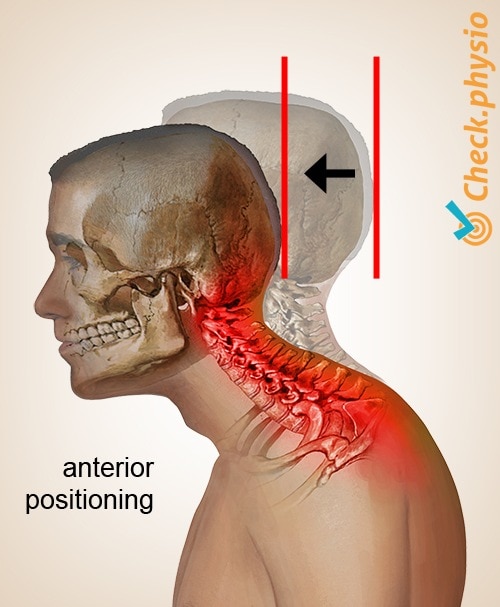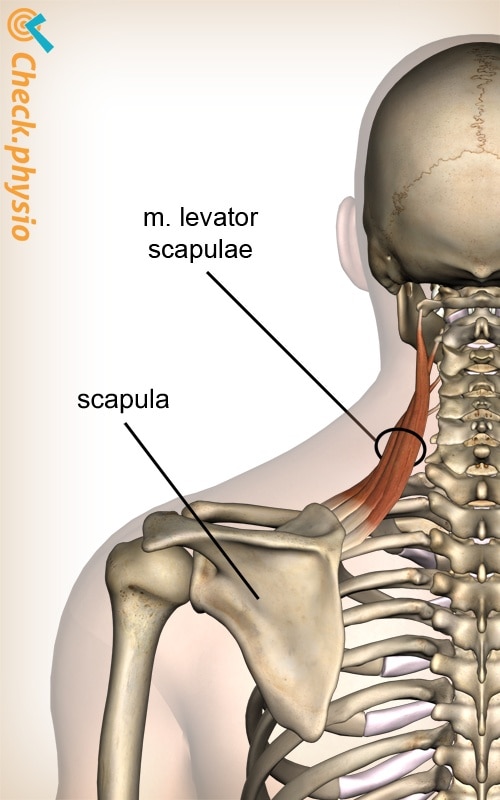Cervical posture syndrome
Posture-related neck pain / postural neck pain / upper crossed syndrome
Cervical posture syndrome is characterized by pain in the neck and upper back that occurs as a result of incorrect posture. The primary symptoms include pain, stiffness and a tired feeling in the neck.

Description of condition
In cervical posture syndrome, the head is usually positioned too far forward in relation to the trunk. This is called the "anterior positioning" of the cervical spine. The center of gravity of the head is positioned too far in front of the cervical spinal column as a result. This places an additional load on the neck muscles, because they effectively have to support the head, which weighs 5 kilograms.
This creates an imbalance between the muscles of the neck. They become over-loaded as a result of the patient sitting, standing or working with a stooped posture. The "levator scapulae" muscle appears to be particularly susceptible. The intervertebral discs and vertebral joints can also become over-loaded as a result of prolonged stooping.
Cause and history
Incorrect posture can be detected when the patient sits or stands. Sometimes the stooped posture is only evident with certain activities. Examples include prolonged sitting at a desk or table (reading, writing, studying) or working at a computer (laptop) or tablet.
Carrying heavy objects with sagging shoulders also places excessive strain on the muscles of the neck. The symptoms associated with cervical posture syndrome may also occur when both arms are extended forward for prolonged periods, such as when driving a car.
Signs & symptoms
The patient will complain about pain or a tired feeling in the neck, the upper back or the head. Patients often have a "stiff neck" and in some cases the joints of the jaw are also affected. The affected muscles may be painful to touch and recognizable symptoms can be provoked by forceful contraction of the muscle.
Diagnosis
Treatment
It is important to tackle the cause of the problem quickly, in order to prevent severe injury to an intervertebral disc in the long term. The treatment is therefore aimed primarily at improving the posture (of the head and neck) and getting the patient to be more active. The muscles that move the head from the anterior position to the neutral position are trained.
Exercises
Ask your physiotherapist for guidance with these symptoms or follow this exercise program with exercises for cervical posture syndrome.
You can check your symptoms using the online physiotherapy check or make an appointment with a physiotherapy practice in your locality.


References
Nugteren, K. van & Winkel, D. (2012). Onderzoek en behandeling van de nek. Houten: Bohn Stafleu van Loghum.
Winkel, D. & Aufemkampe, G. (1994). Orthopedische geneeskunde en manuele therapie. Deel 2. Wervelkolom. Houten/Diegem: Bohn Stafleu van Loghum.




